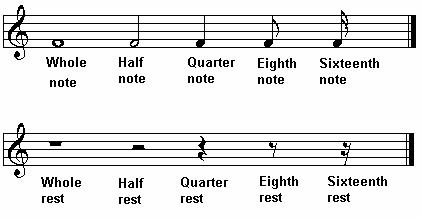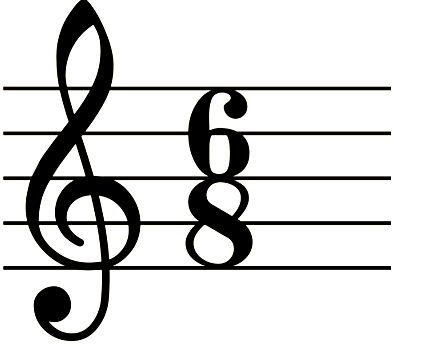In lesson 2 – Unlock the Song, we were introduced to key signatures, however this is not the only element that is used to determine the aspects of a musical piece. An essential part of music composition is rhythm. Every note in a particular piece of music carries a value of time represented by a fraction. A measure, or bar, is a segment of the music that dictates the meter and pace of the music. A fraction is used to represent the length of time a note should be performed within a measure. The rate at which notes are played is specifically based on what is known as a time signature. A time signature is represented by two numbers on the staff just after the treble clef at the very beginning of a musical piece. For instance, the top number in a time signature indicates the number of counts or beats which are to be played in each measure. The bottom number indicates which particular note equals one beat.
In the example above representing the time signature 4/4, there are to be four (4) beats per measure where a quarter note (represented by the bottom number 4) equals one count. The values of the notes are changed based on the change in numbers in the time signature. The most common notes are indicated in the following diagram:
The example below represents the time signature 6/8, where there are to be six (6) beats per measure and an eighth note (represented by the bottom number 8) equals one count.
Take a look at the following examples of other time signatures remembering that the top number is the number of beats per measure, and the bottom number is the type of note that receives one beat of playing time.

Other Time Signatures




